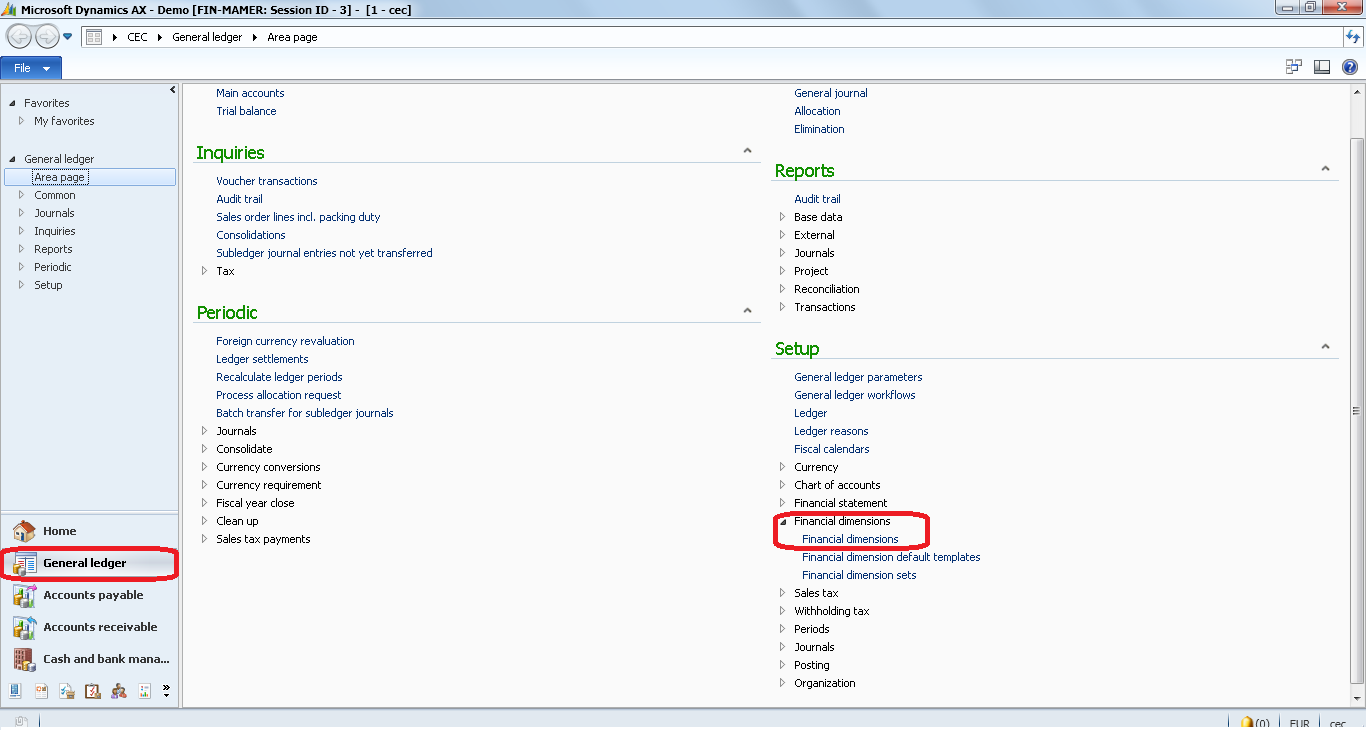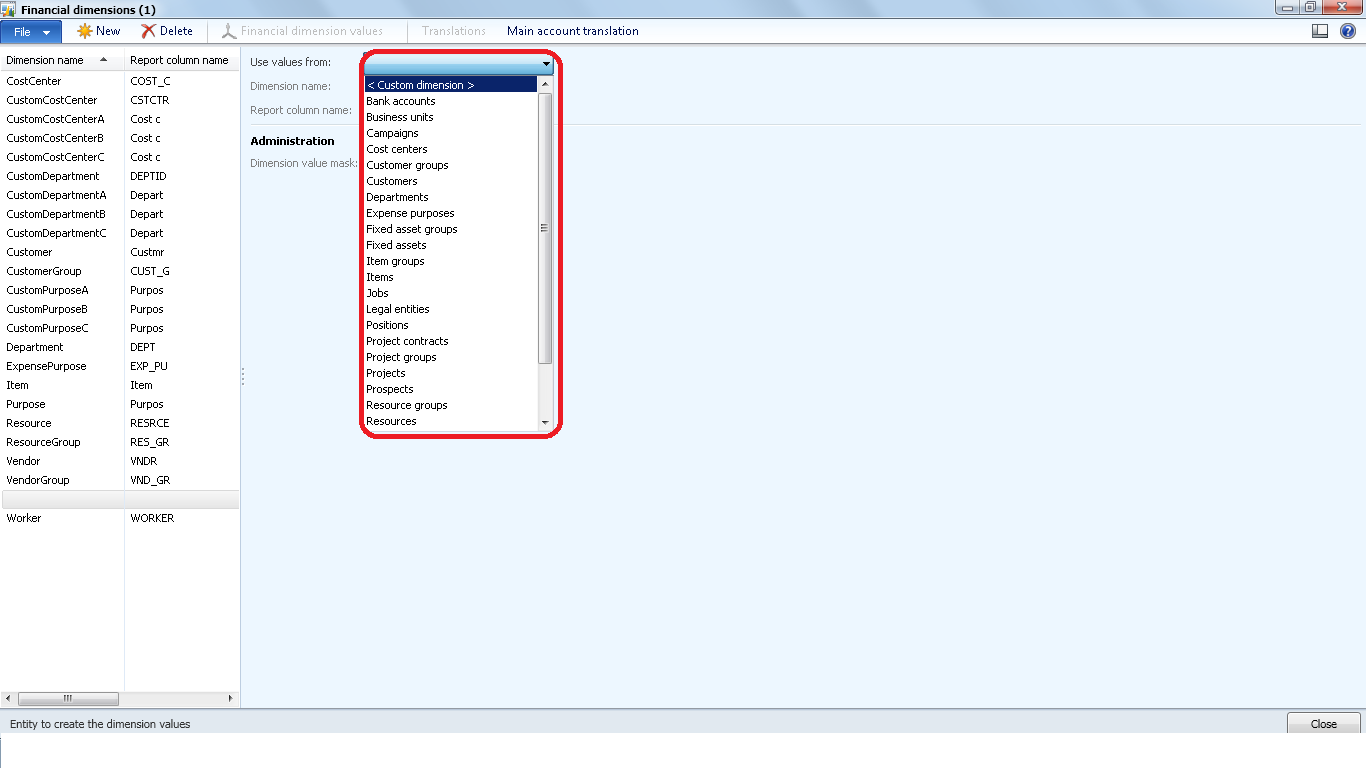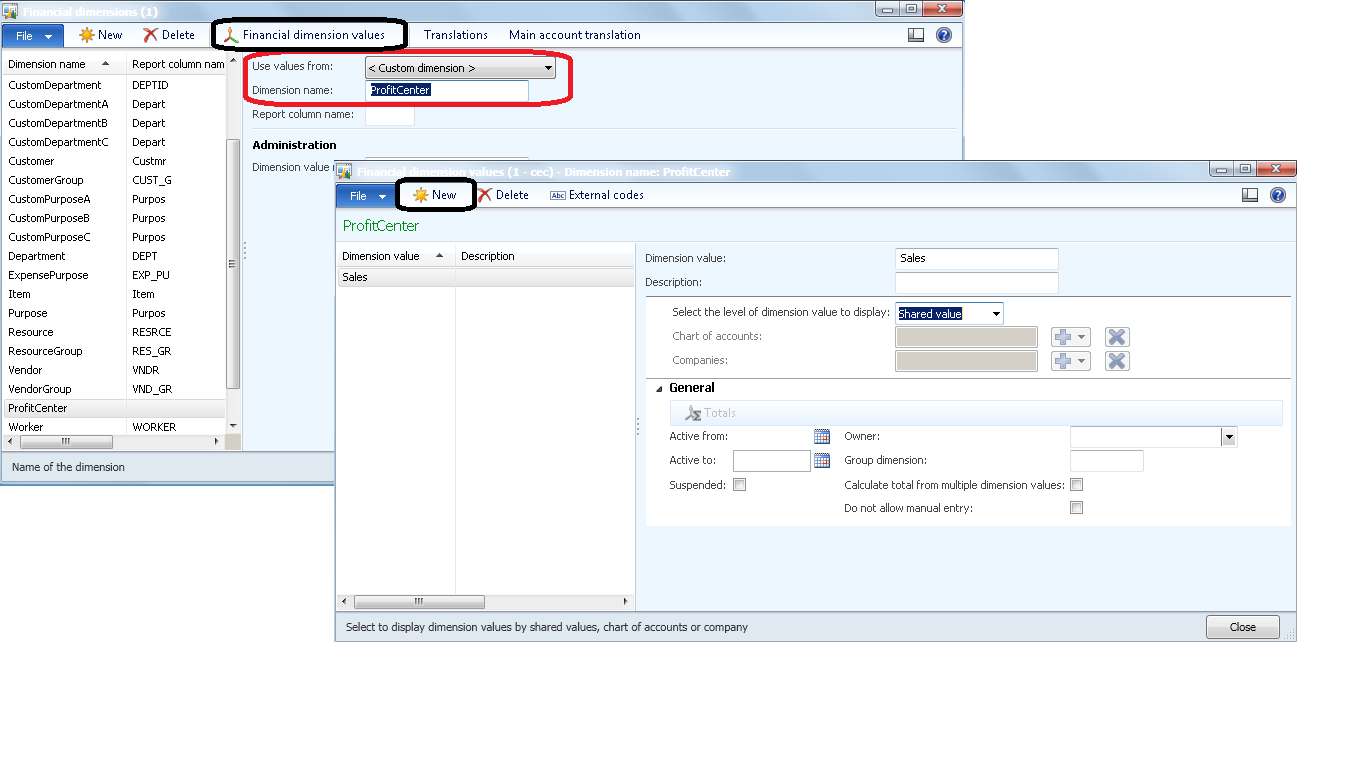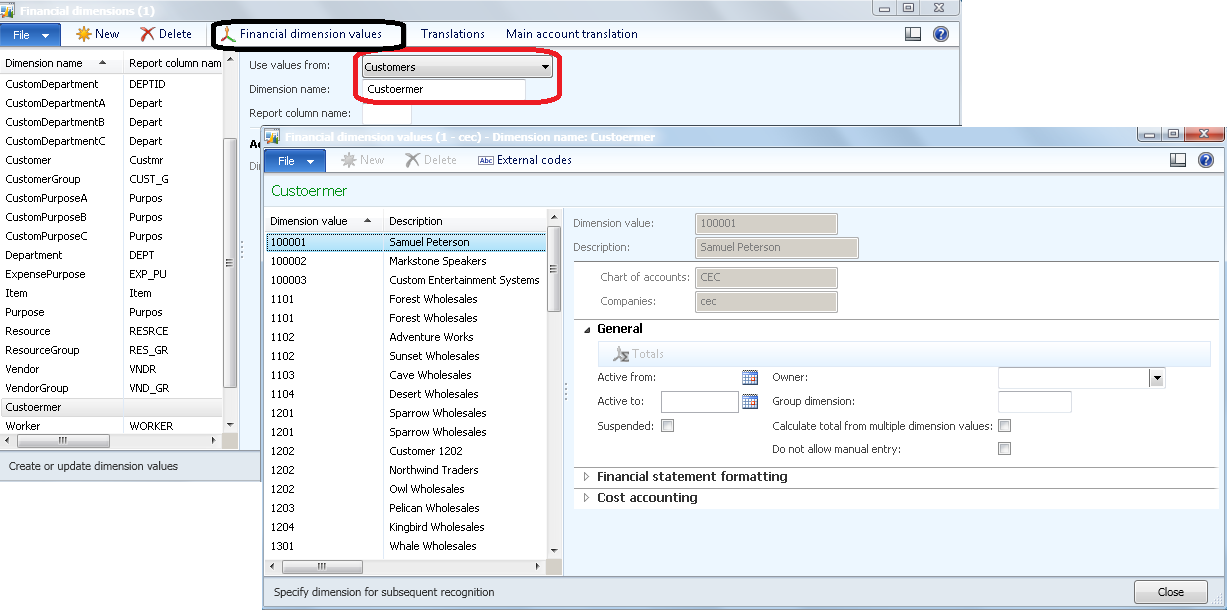User and System Dimensions in AX 2012
I have published an article recently regarding the new features of financial dimensions in AX 2012, this post I will discuss the creation of the financial dimensions values in MS Dynamics AX 2012, previously shown the financial dimensions importance in financial analysis, and how it facilitate the inquiry of accounts balance.
The Financial consultant working with the controllership during the analysis phase and the design phase in order to understand how will utilize the financial dimension function effectively the financial consultant was constrained with the limited number of financial dimensions, and that leads to conflict with customer, and at some points dissatisfaction, MS Dynamics AX 2012 have bridge this critical gap where offering unlimited financial dimensions so there is no constrains.
There was other obstacle facing the implementation team which is assigning master data to financial dimensions such as vendors, customers, fixed assets, items, and banks, and the best scenario for it is automatic (on line) assignment in order to keep the integrity, the solution for this requirement whether it will be maintained manually or by automatic trigger (customization) MS Dynamics AX 2012 have bridge this gab too.
MS Dynamics AX 2012 has two (2) types of financial dimensions;

The user defined dimensions that what was used in MS Dynamics AX 2009, and be able to add unlimited number for dimensions (Business unit, cost center, purpose, profit center…) as per analysis out comes.
The system defined dimensions that function where assigning the master data to newly created dimensions vendors, customers, fixed assets, items…
Hereunder the steps to create new dimension
1. Click area node General ledger-> Setup-> Financial dimensions->Financial dimensions

2- The financial dimension for will popup

3- Creates new financial dimension

4- Select the dimension type

If you want to add user defined dimension: then select <Custom dimension>

If you want to add system defined dimension: then select one of values listed in the combo box (Bank accounts, Business units, Campaigns, Customer groups, Customers, Department Expense purposes, Fixed asset groups, Fixed assets, Item groups, Items, Jobs, Legal entities, Positions Projects, Prospects, Resource groups, Resources, Value stream, Vendor groups, Vendors, Worker)
